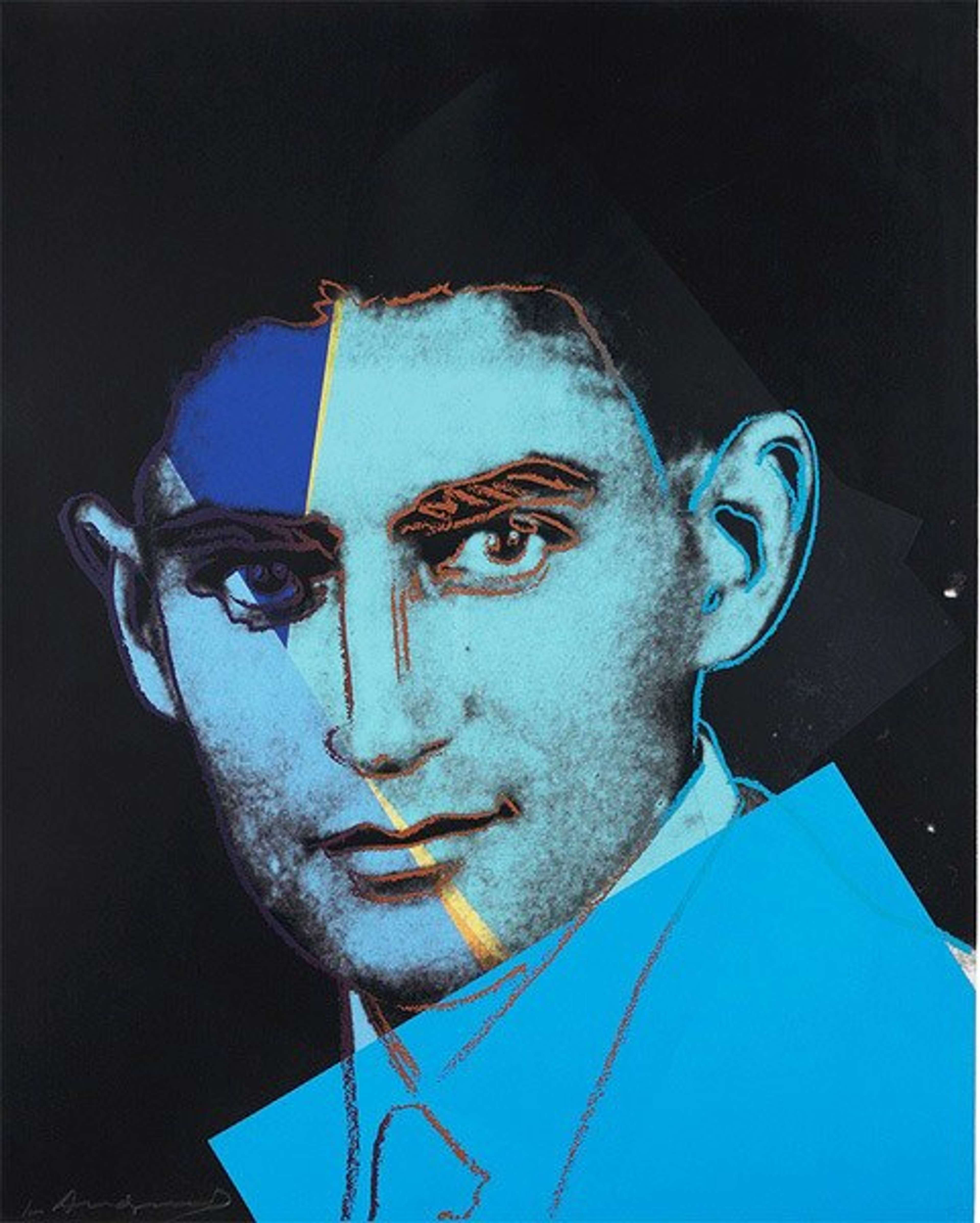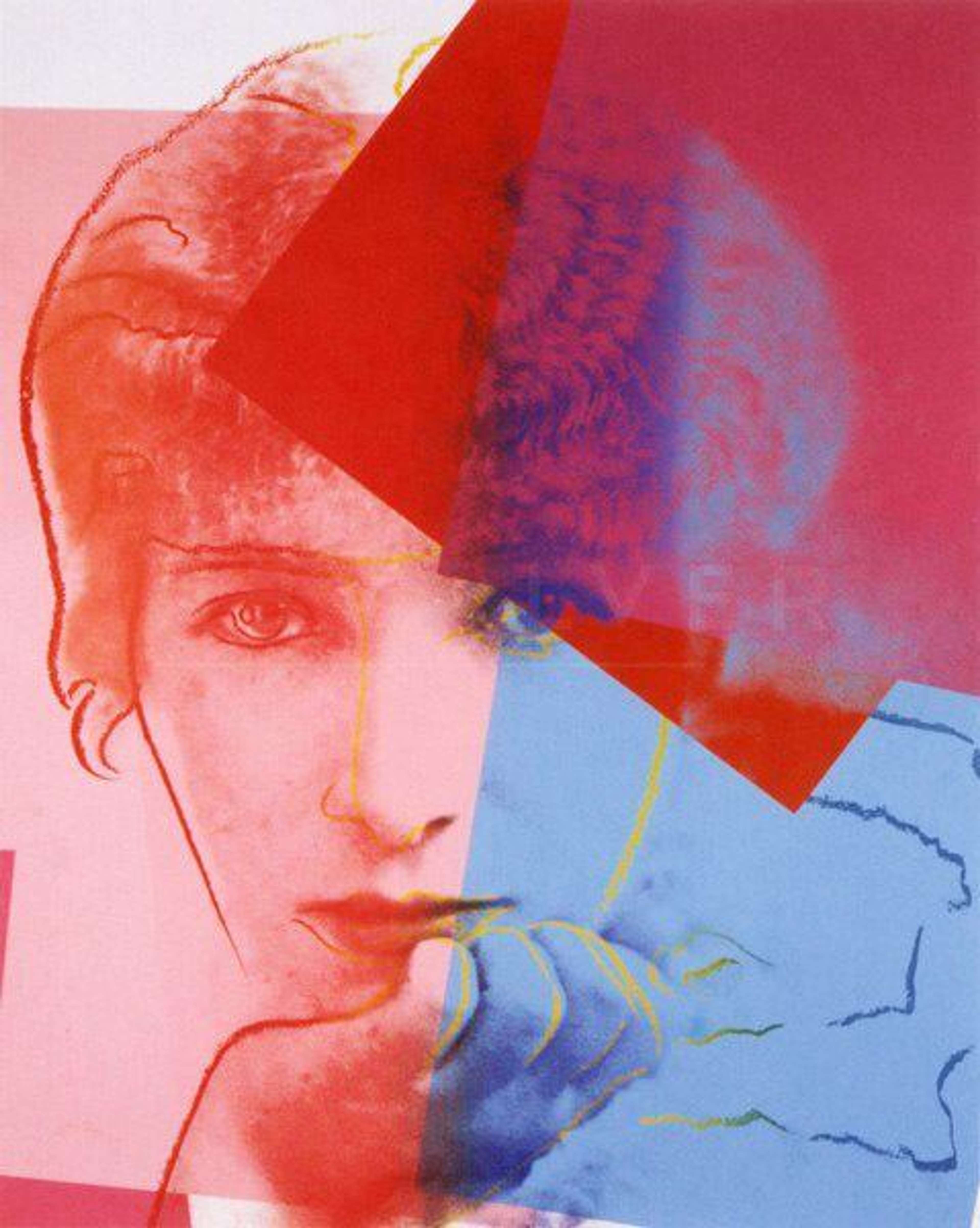 Albert Einstein (F. & S. II.229) © Andy Warhol, 1980
Albert Einstein (F. & S. II.229) © Andy Warhol, 1980
Interested in buying or selling
Andy Warhol?

Andy Warhol
487 works
Andy Warhol's Ten Portraits of Jews is a lesser known series by the Pop artist that plays on the idea of celebrity. Here are 10 facts about the collection:
Each print in the collection depicts a portrait of a renowned Jewish figure from the 20th century.
 Franz Kafka (F. & S. II.226) © Andy Warhol, 1980
Franz Kafka (F. & S. II.226) © Andy Warhol, 1980The sitters comprise of:Sarah Bernhardt the French stage actor; Louis Brandeis, the first Jewish judge to be appointed to the Supreme Court of the United States; Martin Buber, the renowned philosopher; Albert Einstein, the great theoretical physicist; Sigmund Freud, the founder of the psychoanalytic school of psychology; the Marx Brothers, the iconic comedic group; Golda Meir, the first female Prime Minister of Israel; George Gershwin, the American composer; Franz Kafka, the pioneering German writer, and Gertrude Stein, the remarkable American novelist.
Warhol had another name for the series.
 Martin Buber (F. & S. II.228) © Andy Warhol, 1980
Martin Buber (F. & S. II.228) © Andy Warhol, 1980Warhol nicknamed the collection ‘Jewish geniuses’ due to the significant contributions these figures made to society.
The collection was first exhibited in 1980.
 Sigmund Freud (F. & S. II.235) © Andy Warhol, 1980
Sigmund Freud (F. & S. II.235) © Andy Warhol, 1980The collection was first exhibited at the Jewish Museum of New York in 1980 and was later displayed at the National Portrait Gallery in London in 2006.
The creation of the portraits was a collaborative effort.
 The Marx Brothers (F. & S. II.232) © Andy Warhol, 1980
The Marx Brothers (F. & S. II.232) © Andy Warhol, 1980The collection was suggested to Warhol by art dealer Ronald Feldman who also chose the subjects of the portraits in consultation with the director of the art gallery of the Jewish Community Center of Greater Washington, Susan Morgenstein.
This series, like many, deconstructs the celebrity image.
 Sarah Bernhardt (F. & S. II.234) © Andy Warhol, 1980
Sarah Bernhardt (F. & S. II.234) © Andy Warhol, 1980Warhol produces a fascinating dialogue between surface and image, though his use of abstraction and photographs. This prompts interesting questions about the construction of a celebrity’s image and the way in which they are viewed in the public realm versus in real life.
This series extends Warhol's obsession with celebrity.
 Louis Brandeis (F. & S. II.230) © Andy Warhol, 1980
Louis Brandeis (F. & S. II.230) © Andy Warhol, 1980While Warhol’s graphic style stays the same as his celebrity portraits in this series, the celebrity subject changes radically. The sitters of the portraits in Ten Portraits of Jews transcend the realm of surface level fame that Warhol was so obsessed with, and enter into the space of an intellectual elite.
Warhol experiments with photography and abstraction in this series.
 Golda Meir (F. & S. II.233) © Andy Warhol, 1980
Golda Meir (F. & S. II.233) © Andy Warhol, 1980In many of the prints in the collection Warhol uses colour-fields of layered geometric shapes to form backdrops onto which he layers a photograph of a famous Jewish figure. The faint photographic images contrast with the bright and vibrant backdrops and abstracts the archival photographic images from their original context.
Warhol turns these figures into Pop Art icons.
 Golda Meir © Andy Warhol, 1980
Golda Meir © Andy Warhol, 1980By choosing ten notable figures who have all died and rendering them in a highly contemporary Pop Art style, Warhol memorialised these people and turned them into Pop Art icons whose impressive legacies are masked behind a veneer of modernity. This further leads one to question the way images are manufactured and the difference between a person and their constructed image.
The record price for a print in this series is US$2.3 million.
 Albert Einstein (F. & S. II.229) © Andy Warhol, 1980
Albert Einstein (F. & S. II.229) © Andy Warhol, 1980Sold for US$2.3 million (£1.7 million) at Sotheby's in October 2020, an Albert Einstein painting from the Ten Portraits of Jews series became the record price for a work in this collection.
A print from this series was last sold in October 2022.
 Gertrude Stein (F. & S. II.227) Andy Warhol, 1980
Gertrude Stein (F. & S. II.227) Andy Warhol, 1980A Gertude Stein (F. & S. II.227) was sold at Sotheby's in October 2022 for US$945,00 (£816,540) in their Andy Warhol: Yours Truly | An Important Private Collection sale.